Excellence Driving Bur Dubai: A Comprehensive Exploration
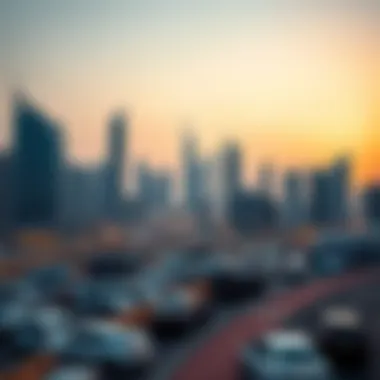
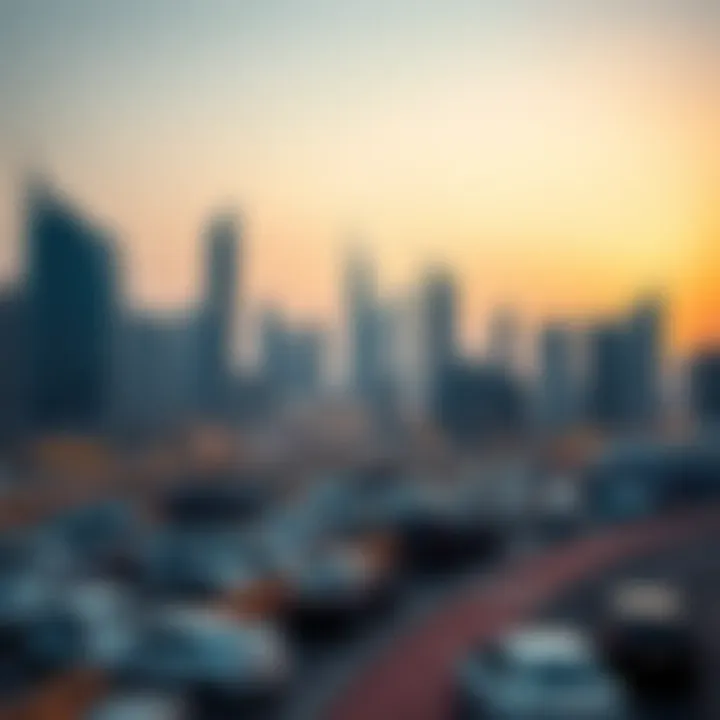
Intro
In the vibrant tapestry that is Dubai, Bur Dubai stands out not just as a geographical location but as a living testament to what excellence can mean in urban development. It marries rich cultural heritage with progressive modernity, creating an alluring realm for both residents and investors alike. This area has morphed from its historical roots to become a notable player on the global stage, showcasing everything from architectural wonders to a flourishing economy.
As the world watches Dubai's transformative journey, Bur Dubai earns its reputation through various facets—ranging from dynamic real estate opportunities, unbeatable lifestyle options, and a relentless pursuit of sustainability. This article aims to peel back the layers, providing insights for those navigating this rich landscape. Whether you're an investor, a real estate agent, or someone looking to relocate, Bur Dubai offers a treasure trove of potential.
We’ll dive into the current market dynamics, highlight areas ripe for investment, and explore the environmental initiatives that are shaping the future of this district. By the end of our exploration, it will be evident that Bur Dubai is not merely a spot on the map but a thriving ecosystem where history and future intertwine.
Understanding Bur Dubai
Bur Dubai is not just a locality in Dubai; it is a rich tapestry woven from the threads of history, culture, and modernity. It embodies the convergence of the old and the new, showcasing how tradition can coexist with contemporary urban life. Understanding Bur Dubai is critical for anyone looking to grasp not only the essence of this vibrant area but also the broader narrative of urban development in one of the world's most dynamic cities.
The significance of delving into Bur Dubai lies in its multifaceted characteristics. This region acts as a living museum of time-honored heritage while being a beacon of economic activity. Those interested in real estate, culture, and investment can gain valuable insights into the pivotal elements that shape the allure of this locale. In a world where urban centers are often homogenized, Bur Dubai stands out as a prime example of how preserving cultural identity can bolster economic growth.
Historical Context
Bur Dubai's historical context is inherently tied to the very foundation of Dubai as a trading hub. It began as a small fishing village and developed into a thriving center for commerce and trade. Historically, the region flourished due to its strategic location along the Arabian Gulf, making it a melting pot of cultures and ideas.
In the 19th century, the establishment of the Al Fahidi Fort heralded a new era, allowing Dubai to fortify its trade routes and emerge as a significant economic player in the region. The old souks, which remain today, are like gateways to the past, where you can find everything from spices to textiles, giving an authentic flavor of what life used to be. The juxtaposition of historic structures with modern skyscrapers paints a vivid picture of transformation.
But the historical narrative doesn’t just stay in the past. It influences current urban planning, community engagement, and even the local economy. Investors interested in real estate should pay close attention to these historical contexts, as they hold clues on how the area has evolved, along with its potential future.
Cultural Significance
The cultural significance of Bur Dubai is palpable. It is home to some of the oldest districts in Dubai, including Al Bastakiya, which showcases traditional wind-tower architecture. Walking through these streets, one can hear the echoes of history intermingled with the modern-day chatter of residents and visitors alike.
Cultural events throughout the year further enrich the area's vibrancy. The Dubai Shopping Festival and various art exhibitions serve to draw in a multitude of cultures, creating an eclectic atmosphere. This blend results in a community that is both convivial and inclusive.
Furthermore, institutions like the Dubai Museum play a crucial role in preserving local heritage, making it accessible to outsiders. As a focal point for educational and cultural engagement, it invites expatriates and investors alike to understand better the values that drive this unique community.
Understanding Bur Dubai from these angles—historical and cultural—offers a roadmap for those interested in investing or living in this fascinating area. The more one digs into its past, the clearer the future becomes, and for potential stakeholders, that knowledge can be invaluable.
Economic Landscape
The economic landscape of Bur Dubai plays a vital role in shaping its identity and allure. Characterized by a rich mix of local enterprise and global ambitions, this area serves as a microcosm of Dubai’s overall economic prowess. Investors and analysts keen on gauging the potential of the city will find that Bur Dubai offers not just a location, but a comprehensive ecosystem where businesses can thrive. The financial dynamics here are further influenced by the diverse population, international trade, and development initiatives.
Local Businesses and Investment
Bur Dubai’s local businesses define its spirit and serve as a robust backbone for the economy. The bustling souks, for instance, are not just markets; they are vibrant cultural hubs. Strolling through these marketplaces offers a glimpse of day-to-day life, filled with colors, sounds, and the enticing aroma of spices. Small and medium enterprises in Bur Dubai benefit from government support aimed at fostering growth and innovation. Incentives like financial grants and access to training for entrepreneurs create an environment ripe for discovering new ventures.
"Local businesses along the streets of Bur Dubai address the needs of both locals and tourists, providing an intimate experience that transcends shopping."
Moreover, real estate opportunities are abundant. Properties ranging from residential to commercial are not just buildings but potential investment avenues. As expatriates move in, the demand for housing and services skyrockets, leading to a flourishing sector. Investors are increasingly drawn to areas with high foot traffic, such as Al Seef, where modern retail outlets mingle with historical architecture. This blend not only boosts local economies but also draws significant foreign investment.
- Key Highlights for Investors:
- Thriving small businesses enhance local culture.
- Rising demand for commercial properties.
- Supportive government policies foster entrepreneurship.
Impact of Global Markets
The economic landscape of Bur Dubai cannot be discussed without considering the influence of global markets. As a member of the Gulf Cooperation Council, Dubai's economy is intricately linked to both regional and international economic shifts. Bur Dubai, often considered the heartbeat of Dubai, showcases the swift adaptation to global trends.
For instance, fluctuations in oil prices or shifts in trade policies can directly impact investment flows into the region. The area's strategic location makes it a crucial trade hub; consequently, any global changes can have tangible effects on local businesses and large corporations alike. When global markets are shaky, companies based in Bur Dubai might explore diversifying their portfolios or navigating new trade routes, emphasizing adaptability.
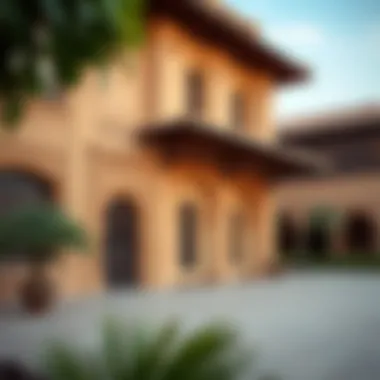
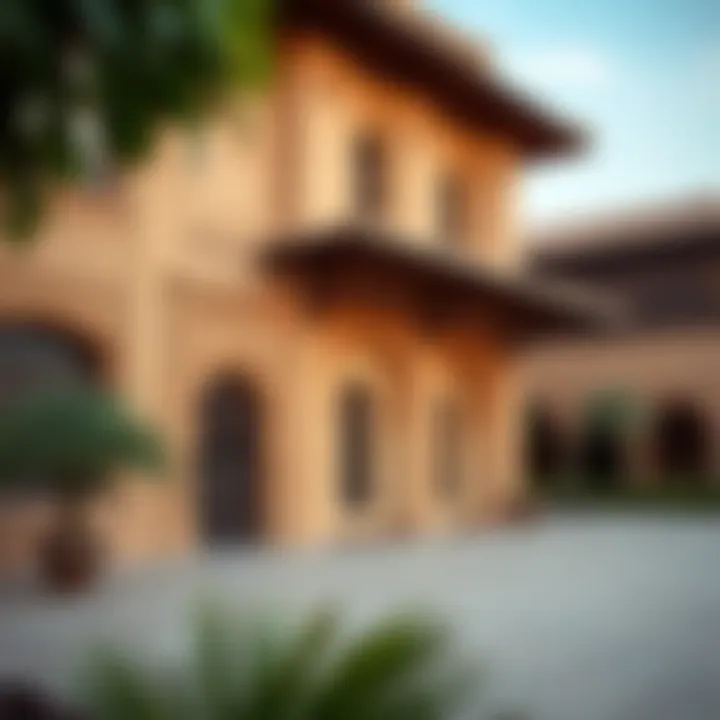
With the rise of technological advancements, Bur Dubai also welcomes startups focusing on tech solutions related to finance, retail, and logistics. These enterprises reflect the larger trends in globalization and digital transformation. Investors who keep a pulse on these global trends find that opportunities in Bur Dubai often outstrip those in more established markets. Technology firms moving into Bur Dubai signal not just growth, but a shared commitment to sustainability and innovation.
- Takeaway Insights:
- Global economic shifts influence local business strategies.
- Emphasis on innovation and technology reshapes traditional sectors.
- Bur Dubai attracts investment by adapting to global economic climate.
Real Estate Dynamics
The real estate realm in Bur Dubai plays a pivotal role in shaping the overall character and economic vigor of the area. It is this dynamic interplay between heritage and modernity that fascinates not just residents but draws in a multitude of investors and expatriates. The developing spaces showcase a clever blend of traditional architecture against contemporary designs, thus presenting an attractive proposition for various stakeholders. Understanding real estate dynamics is not only crucial for investment decisions but also lends insight into the evolving socio-economic landscape of Bur Dubai.
Current Market Trends
When considering current market trends in Bur Dubai, it’s evident that there’s an ongoing transformation. Property values have been on an upward trajectory, spurred by robust infrastructural developments and heightened demand. There’s a marked increase in mixed-use developments, which cater to both residential and commercial needs. Such evolution often reflects broader global trends where urban living spaces are designed to serve multiple purposes. People are looking for convenience, and having everything under one roof is a huge draw.
Moreover, the rental market has seen an uptick, attracting a blend of permanent residents and transient expatriates seeking short-term rentals. High-rise apartments offer breathtaking views, while villas in quieter neighborhoods appeal to families. This variety enhances the overall appeal of the real estate market, making it a diverse environment ripe for exploration.
Investment Opportunities
Bur Dubai is increasingly regarded as a goldmine for investment opportunities. Investors are diving into this market not only for immediate benefits but also for long-term gains. The strategic location of Bur Dubai, with its proximity to key areas like the Dubai International Financial Centre, amplifies its investment allure.
Potential investors should consider properties that reflect the macroeconomic shifts toward sustainability and smart technology integration. Real estate projects that prioritize eco-friendly features and innovative designs are expected to yield higher returns. Investment in off-plan properties can also be advantageous, as they often come with enticing prices and flexible payment plans.
Investors should keep an eye on developments that promise significant community engagement. Areas that host cultural events and social gatherings often see property values rise due to their congenial atmosphere, attracting more buyers and renters.
Residential vs Commercial Properties
When weighing residential and commercial properties in Bur Dubai, it’s pertinent to acknowledge their distinct characteristics and benefits. Residential properties often cater to families and young professionals looking for homes with amenities and community features. They offer stability in rental income and lower turnover rates, which can be appealing for landlords.
On the other hand, commercial properties—including office spaces and retail outlets—are poised to generate higher yield but come with increased risks and management complexities. The demand for commercial spaces has risen as businesses are eager to establish a footprint in this bustling locale. Expansions in sectors like retail and hospitality indicate that commercial ventures are thriving.
In brief, choosing between residential and commercial investments should depend on individual investment goals, risk tolerance, and the nature of returns expected. Both avenues offer unique opportunities that, when navigated wisely, can yield significant rewards.
"Understanding the nuances of Bur Dubai's real estate market can provide a competitive edge to investors and residents alike."
The ever-evolving dynamics of Bur Dubai’s real estate landscape highlight its significance and allure for individuals and businesses alike. With thoughtful consideration, stakeholders can tap into this vibrant market and drive their ventures towards success.
Architectural Excellence
In the context of Bur Dubai, architectural excellence transcends mere aesthetics; it shapes the identity and functionality of the urban landscape. The integration of traditional and contemporary architectural styles serves not only to honor the area's rich heritage but also to cater to the demands of modern urban living. This duality presents a unique opportunity for investors and developers to explore innovative projects that resonate with both residents and visitors.
Iconic Structures
Bur Dubai boasts several iconic structures that define its skyline and represent the progress of this vibrant community. The Burj Khalifa, while not located directly in Bur Dubai, embodies the spirit of Dubai’s architectural ambition. However, within Bur Dubai, structures such as the Grand Mosque and the Sheikh Saeed Al Maktoum House showcase traditional Islamic architecture, evoking a sense of place deeply rooted in history.
- Artistic Elements: Intricate calligraphy and geometric patterns are prevalent in many of these buildings, providing a visual narrative about the city's past and cultural ethos.
- Landmarks: More than just buildings, these structures stand as landmarks, attracting tourists and contributing to the local economy. Their presence underscores Bur Dubai’s role as a historical and contemporary hub, fostering a blend of old and new that appeals to both expatriates and investors.
Urban Planning and Design
Effective urban planning has become a cornerstone of Bur Dubai's development strategy. It prioritizes not only the aesthetic quality of the built environment but also the functionality and livability of urban spaces. Planners emphasize a balanced distribution of residential, commercial, and recreational areas, consciously crafting a holistic community atmosphere.
- Mixed-Use Developments: The emphasis on integrated mixed-use projects enhances accessibility and convenience, encouraging a vibrant street life where businesses thrive alongside residential offerings. These developments often see parks and public amenities integrated into the design, creating green corridors that enhance the quality of life for residents.
- Walkable Communities: The character of Bur Dubai encourages walking and public transport use, gradually reducing reliance on automobiles. This framework not only mitigates congestion but also promotes healthier lifestyles for its residents.
Innovative Construction Techniques
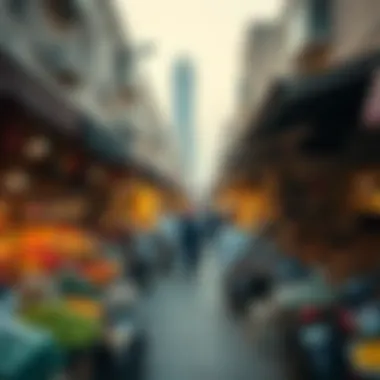
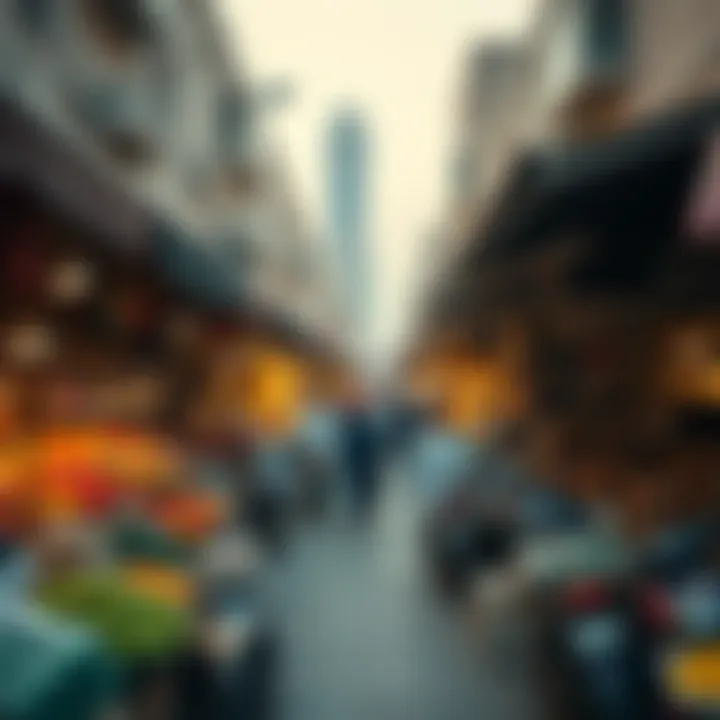
The construction landscape in Bur Dubai is ever-evolving, with a keen eye on sustainability and innovation. Traditional methods are often blended with state-of-the-art technology, resulting in structures that are both environmentally friendly and cost-effective.
- Eco-Friendly Materials: Many projects are presently utilizing sustainable materials, reducing the overall carbon footprint of construction processes. This shift reflects a growing awareness of environmental impacts and market demand for greener options.
- Smart Building Technologies: The adoption of smart technologies in new buildings—like energy management systems and automated controls—demonstrates a commitment to enhancing both energy efficiency and occupant comfort. It allows for buildings to be adaptive to user needs while aligning with global sustainability goals.
The architectural progress seen in Bur Dubai is a benchmark for urban development worldwide, striking a delicate balance between tradition and modernity, showcasing how thoughtful design can enrich life in urban settings.
In summary, architectural excellence within Bur Dubai not only enhances its visual allure but also plays a vital role in its economic and cultural dynamics. As the city continues to grow, the ongoing commitment to innovative architecture will undoubtedly attract more international attention, fostering an engaging and sustainable environment for all.
Environmental Considerations
Environmental considerations in Bur Dubai reflect a crucial interplay between urban development and ecological sustainability. As urbanization continues to expand in this region, the pressing need to align growth with environmental stewardship has emerged prominently. Investment opportunities are no longer solely measured by economic returns; investors are increasingly aware of the implications on the environment and community well-being.
Sustainable Development Practices
Sustainable development practices serve as a backbone to ensure that Bur Dubai evolves without jeopardizing its ecological integrity. Recent initiatives highlight how local entities pursue practices that minimize environmental degradation while fostering economic growth. For instance:
- Use of Renewable Energy: Solar panels decorate rooftops throughout the region, harnessing the abundant sunshine. This reduces reliance on conventional energy sources and promotes clean energy alternatives.
- Water Conservation Efforts: With the ongoing threat of water scarcity, many developers implement water-saving technologies. The installation of low-flow fixtures in residential and commercial properties exemplifies this commitment to sustainable usage.
Moreover, educational campaigns focusing on environmental awareness are being rolled out to bolster community engagement in sustainable practices. Local schools and organizations partner to host workshops aimed at teaching residents and businesses about eco-friendly habits. This collaborative effort significantly enhances community knowledge and encourages collective action towards sustainability.
Green Spaces and Urban Ecology
Green spaces are another vital aspect of Bur Dubai’s environmental narrative. Parks, gardens, and green corridors don't just beautify the landscape; they provide essential ecological benefits. Benefits include:
- Improved Air Quality: Green areas act as natural air filters. The plants absorb carbon dioxide and pollutants, contributing significantly to the air quality of Bur Dubai.
- Biodiversity Enhancement: Green spaces support a variety of species, thereby playing a critical role in maintaining local biodiversity. This emphasis on biodiversity is crucial in the context of urban areas where wildlife often struggles to survive.
The vision for Bur Dubai also includes integrating natural features into urban planning. Developers are incorporating parks as essential features in new housing projects, transforming them into community hubs where residents gather, exercise, and connect. Such integration fosters a sense of community while reinforcing the importance of nature in urban life.
"The true measure of a city’s progress lies not just in its economic success but also in the harmony it achieves with its natural environment."
For more resources concerning environmental sustainability efforts in urban settings, check out Wikipedia's coverage on Urban Ecology or Britannica's insights on Sustainable Development.
In summary, Bur Dubai's commitment to environmental considerations showcases a forward-looking approach where urban excellence and ecological responsibility go hand in hand. As the community navigates future challenges, a continued focus on sustainable practices and green spaces will be imperative for preserving the environmental quality that enhances the appeal of this vibrant locale.
Social Fabric
The social fabric of Bur Dubai is a rich tapestry woven from its residents' diverse backgrounds, cultures, and lifestyles. This intermingling of traditions and viewpoints plays a vital role in defining not only the character of the area but also its strength and resilience. The importance of the social fabric goes beyond just the day-to-day interactions among individuals; it shapes community identity, fosters cooperation, and encourages mutual respect. In a cosmopolitan environment like Bur Dubai, where expatriates constitute a significant portion of the populace, understanding and engaging with this social fabric becomes crucial for investors, agents, and analysts alike.
Community Engagement
In Bur Dubai, community engagement is not a mere buzzword; it's a living practice that breathes life into social relations. Many organizations, both governmental and non-governmental, invest in creating platforms and opportunties for locals and expatriates to come together. These interactions manifest through town hall meetings, charity events, and local initiatives that seek to bolster social cohesion.
Initiatives such as the Dubai Community Development Authority often focus on integrating different cultures through community services, enhancing the feeling of belonging among residents. The impact of such engagement cannot be understated; it nurtures understanding, respect, and collaboration among various ethnic groups. Moreover, active community participation can directly influence the local economy by encouraging residents to support local businesses and services.
Lifestyle Amenities
Lifestyle amenities in Bur Dubai stand out as an essential element that complements the social fabric of the area. Parks, restaurants, malls, and recreational centers contribute not just to the convenience of residents but also to their social interactions. For instance, parks like the Al Fahidi Historical Neighborhood offer both serene spaces for relaxation and vibrant venues for social gatherings, blending history with contemporary lifestyle needs.
Benefits of these amenities include:
- Cultural Exposure: Various dining options that reflect the diversity of the community, from traditional Emirati dishes to international cuisines.
- Accessibility: Ease of access to fitness centers and leisure facilities enhances the quality of life.
- Social Hub: Shopping districts and cafés serve as meeting points for friends and families, facilitating social ties.
These amenities do more than offer convenience; they enrich the community’s lifestyle, making Bur Dubai an attractive destination for both residents and investors.
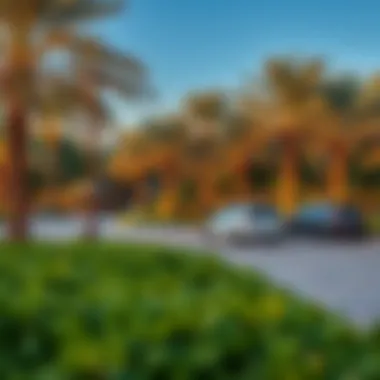
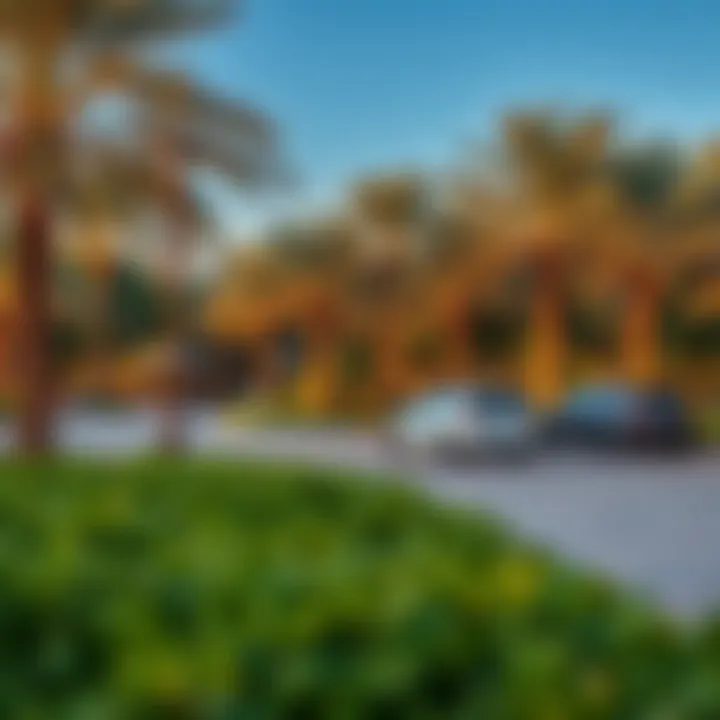
Cultural Events and Festivals
The cultural events and festivals in Bur Dubai celebrate the area's history and contemporary achievements. From the Dubai International Film Festival to local arts festivals, these events draw participants from various walks of life, fostering an environment of artistic expression and cultural exchange.
Importantly, events like the Dubai Shopping Festival not only boost business and tourism but also help strengthen community bonds as residents indulge in the celebrations together. These gatherings provide opportunities for individuals to learn about different cultures through performances, workshops, and exhibitions, further enriching the social fabric of Bur Dubai.
"The pulse of Bur Dubai is felt during its festivals, where every corner reverberates with creativity and joy, inviting everyone to join in the revelry."
Such cultural interactions encourage dialogue and unity, reinforcing a sense of belonging among residents and presenting Bur Dubai as a model of multicultural harmony, making it all the more appealing for investors looking for vibrant locales with a dynamic social atmosphere.
In summary, the social fabric of Bur Dubai is not just an undercurrent but the foundation upon which the community thrives, creating a unique identity while facilitating economic opportunities and cultural exchange.
Transportation and Accessibility
Transportation and accessibility are pivotal components in the evolution and charm of Bur Dubai. These elements are not merely conveniences but essential frameworks that hold the community together, fueling its growth and enhancing its appeal to investors, residents, and tourists alike. In a bustling metropolitan like Bur Dubai, well-planned transportation systems and seamless connectivity ensure that one can navigate the city effortlessly. This article hones in on these aspects, shedding light on the critical infrastructures and connectivity options that define life in Bur Dubai.
Public Transport Infrastructure
Public transport in Bur Dubai has undergone significant development over the years. The Dubai Metro stands out as a sterling example, providing an efficient and efficient way to traverse the city. With its iconic red and green lines stretching across the emirate, it connects neighborhoods and commercial hubs alike. More than just a means of transport, the Metro is an architectural feat, effectively blending modern design with functionality.
Bus services complement the Metro, offering coverage to areas not accessed by the rail. Additionally, the Roads and Transport Authority (RTA) has initiated several smart travel solutions, including mobile applications that allow passengers to plan their journeys, check for service disruptions, or even pay fares seamlessly. The integration of water transport services, with abras and ferries gesturing towards the city's maritime heritage, adds yet another layer of depth to the public transport system.
The importance of public transport in Bur Dubai cannot be overstated; it fosters economic interactions, encourages tourism, and promotes a sustainable environment. Reduced traffic congestion is a widespread benefit. When public transport is efficient, fewer people rely on private cars, contributing to lower carbon emissions and a cleaner environment.
Connectivity to Key Areas
Bur Dubai's strategic location allows for excellent connectivity to key areas within and beyond the city. Major highways such as Sheikh Zayed Road and Al Maktoum Road serve as vital arteries, linking the district to other notable regions in Dubai. These thoroughfares facilitate the swift movement of goods and services, which is especially crucial for business growth and real estate investment.
Furthermore, proximity to the Dubai International Airport enhances Bur Dubai’s appeal. It takes just about ten to fifteen minutes from Bur Dubai to the airport via taxi, making it an incredibly attractive spot for expatriates and frequent travelers alike. The airport is a bustling hub that handles a massive flow of international flights daily, offering unmatched connectivity to global destinations.
Healthcare and education facilities are also readily accessible, ensuring that residents do not need to travel far for essential services. Shopping malls, entertainment centers, and cultural landmarks are strategically located. For example, the Dubai Mall and Dubai Creek are only a short ride away, affording both residents and visitors a wealth of options to explore.
In summary, the transportation and accessibility landscape of Bur Dubai serves as a significant driver of excellence, enriching the experience of all who reside or engage with its vibrant community. Better accessibility fosters a sense of belonging and community interaction, directly contributing to the area's social fabric and economic vitality. As Bur Dubai continues to grow and adapt, its transportation infrastructures will play a crucial role in shaping the future of this thriving destination.
The strength of Bur Dubai lies in its connectivity—turning a simple neighborhood into a lifeline of opportunities for everyone.
For more detailed insights into transportation in Dubai, you can explore Dubai’s official Government portal or check out related articles on Wikipedia.
Challenges and Future Prospects
Bur Dubai stands as a vibrant testament to both history and modernity. However, like any flourishing urban area, it is not immune to challenges. Understanding these challenges is key for investors, residents, and policymakers alike. Potential hurdles can influence future growth, affecting everything from real estate investments to quality of life.
Addressing Urban Challenges
One of the primary concerns for Bur Dubai lies in managing urban sprawl. As the population continues to swell, the strain on infrastructure becomes evident. Roads that were once manageable now face congestion at rush hour. To tackle this issue, city planners are reevaluating traffic flow. Smart traffic management systems have been introduced, which gather data to optimize light timings. Efficient public transport can also take some weight off the roads. New routes and improved services aim to draw more commuters to buses and tram systems.
Moreover, housing affordability remains an ongoing issue. With real estate prices steadily rising, we see potential buyers being pushed out of the market. The introduction of affordable housing initiatives can play a pivotal role here. Understanding the needs of diverse income groups could drive targeted developments that keep Bur Dubai accessible and attract new residents.
Environmental sustainability also presents a unique set of challenges. The fast-paced development can sometimes overlook green practices necessary for ecological balance. As temperatures rise, the need for green spaces will only become more critical. Urban planners are recognizing the importance of integrating parks, gardens, and eco-friendly architecture into future projects. This not only helps in reducing the heat island effect but also enhances community wellbeing.
"Addressing urban challenges is not just about making Bur Dubai functional; it’s about creating a livable, sustainable city for all its inhabitants."
Future Development Plans
Looking ahead, Bur Dubai’s future development plans are ambitious, yet focused on sustainability and livability. The government is placing a big emphasis on modern urban design that includes both residential and commercial spaces. One exciting prospect is the Dubai Creek Harbor, which aims to blend innovative living spaces with waterfront leisure.
Additionally, investments in digital infrastructure are set to transform Bur Dubai into a smart city of the future. This includes everything from high-speed internet access to integrated public services that can be accessed via apps. These technological advancements can enhance both security and functionality, allowing residents to engage more fully with their environment.
Moreover, cultural projects are also on the rise. Plans for museums and multi-purpose cultural centers herald an era where heritage meets modernity. Such projects will likely boost tourism while preserving Bur Dubai's unique identity.



